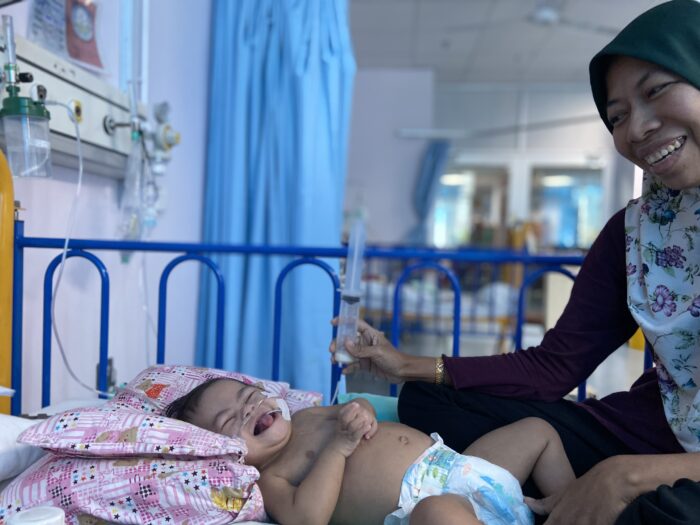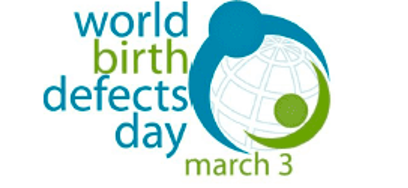The time has come for prioritizing birth defects prevention and care
Summary
More than 94% of children born with serious birth defects occur in LMICs. The global health community has a critical role to play in ensuring access to timely screening, referral, and provision of surgical and medical treatment for all babies born with a birth defect, no matter where they are in the world.

Birth defects or congenital disorders are structural or functional abnormalities that occur during intrauterine life. Some examples of these conditions are congenital heart defects (CHD), neural tube defects, clubfoot, and orofacial clefts.
March 3, 2024 is World Birth Defects Day (#WorldBDDay). On this ninth #WorldBDDAY, we invite the maternal and newborn health (MNH) community to join us in calling upon funders, policy makers, governments and civil society organizations to launch action-oriented plans so that every child born with a congenital disorder has a chance to survive and thrive.
There is an urgent need to prioritize birth defects prevention and care
About 8 million babies are born worldwide with a congenital disorder annually, causing over 400,000 deaths in children under five. Many of the affected children live with lifelong disabilities, experiencing functional limitations, chronic pain, poorer health, stigma, and shorter lives.
More than 94% of serious birth defects, and 95% of all deaths of children born with birth defects, occur in low- and middle- income countries (LMICs), where investments for prevention, screening, surgical treatment and rehabilitative services have not been realized. Initiatives such as Every Newborn Action Plan and Survive and Thrive have accelerated progress in reducing newborn deaths in LMICs; however, not much attention has been given to birth defects. In LMICs, birth defects account for over 7% of childhood deaths while in high-income countries, where newborn and child survival from other causes (e.g., infections and premature birth) has improved, birth defects cause close to 30% of child deaths. Similar patterns are emerging in LMICs (e.g., Sri Lanka) where other causes of childhood mortality have been addressed, indicating a need for concerted efforts to prevent birth defects and to improve care of those affected by them.
The burden of birth defects is believed to be under-estimated in many LMICs due to lack of good surveillance systems. While it is known that birth defects increase the risk of stillbirths, the risk is difficult to quantify due to undocumented stillbirths. Additionally, many elective terminations attributed to birth defects are not reported globally, leading to a serious underestimation of the global toll of birth defects.
Early detection and treatment of congenital disorders in the newborn period can save and improve lives
When identified early in life, many birth defects can be treated, giving a child the best chance to survive and thrive, but babies born with birth defects in LMICs often do not get that chance.
CHD is the most common birth defect and a leading cause of infant deaths. Globally, over 200,000 deaths are caused by CHD per year; 70% of these deaths are in children under 1 year of age and 96% are in LMICs. A newborn with CHD can live a healthy life when a timely diagnosis is made, and given medical, surgical and lifelong follow up care. With new developments in surgical techniques and medicine, survival of persons with CHD has dramatically improved in high-income countries. Sadly, this success is not yet reflected for CHD in LMICs due to various challenges, pointing to healthcare inequities.
If identified early in life, idiopathic clubfoot (a foot deformity) is treatable in 95% of cases with a non-surgical technique that involves a series of casts on the affected foot followed by a period of bracing. Clubfoot can be detected by a simple visual inspection and can be treated in outpatient settings. Almost all children born with this condition in high-income countries receive treatment early in life, while untreated clubfoot remains a major cause of physical disability in LMICs. Starting the treatment shortly after birth provides best chance to lead a disability-free life. Further, there is an economic case favoring early treatment. An idiopathic case of clubfoot can be corrected for only 500 USD per child, resulting in a lifetime return on investment of 120,000 USD per child – this means 24 billion USD in additional global savings that can be invested in healthcare systems to solve more complicated and emerging health problems. Clubfoot is a problem that can be solved through equitable access to care.
Many birth defects are preventable
Birth defects can occur due to genetic, chromosomal, and environmental, or some combination of these factors. Some common modifiable risk factors for birth defects include maternal exposure to smoking, alcohol, recreational drugs, uncontrolled chronic diseases, infections, and teratogenic medication use.
The months immediately before conception and the first 12 weeks after conception are critical for prevention of many birth defects associated with modifiable risk factors. Improving the overall health and nutrition of women and girls during this time is important for prevention of birth defects and good preconception and prenatal care are needed to identify and address these risk factors in a timely manner.
Neural tube defects are the second most common type of birth defects, affecting an estimated 260,000 pregnancies worldwide. They can be prevented to a large extent by ensuring adequate blood folate (vitamin B9) levels among women of reproductive age, and by addressing maternal diabetes and medication exposures. In May 2023, World Health Assembly member states adopted a resolution stressing the need for addressing micronutrient deficiencies to prevent neural tube defects. The resolution promotes food fortification with micronutrients – a proven and cost-effective public health strategy to help countries prevent disability, stillbirths, and under-five mortality associated with neural tube defects.
What needs to be done now?
Answer: The global health community needs to prioritize birth defects prevention and care. The MNH community has a critical role to play in ensuring access to timely screening, referral, and provision of surgical and medical treatment for all babies born with a birth defect, no matter where they are in the world.
This can be achieved by:
- Including birth defects in MNH advocacy, policy, programs and investments at national and global levels
- Building capacity and systems for birth defects surveillance, prevention, early diagnosis, referral, treatment, and care and rehabilitation
- Reducing stigma and suffering by raising awareness and promoting respectful care for all affected individuals and their families
Let’s join forces on this #WorldBDday to speak about the need for health systems investments for birth defects. Without addressing the gaps in birth defects prevention and care, it is not possible to achieve the SDG 2030 targets of reducing childhood mortality and keeping the promise to “leave no one behind”.
World Birth Defects Day Partner engagement opportunities, including webinars, Twitter chat, Facebook live event, are available here.
Authored by: Salimah Walani, MiracleFeet; Bistra Zheleva, Children’s HeartLink; and Vijaya Kancherla, Center for Spina Bifida Prevention at Emory University.
